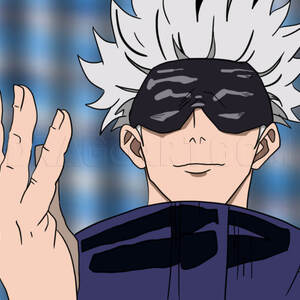1
Draw the oval and "V"-like shield lightly with a No.2 or HB pencil. Make sure you draw it as seen in the picture.
2
Now draw in the bisecting line that extends from his head to the torso. Also draw lightly the extended lines for his arms and "M" type lines for his legs in a seated position.
3
Sketch lightly the crescent red lines for head mass and hairline. Also draw oblong shapes for his hands and feet.
4
You can draw in the lines a. for eyebrows, b. for eyes, c. for nose, d. for mouth, e. for first pillar, and f. for second pillar. Make sure you extend the pillar lines below the feet. That is where the marble stone ends in the picture.
5
Since his head is very small and has little details. I decided to have you draw it all in this one step. Please draw in Abraham Lincoln's hair, face, and beard.
6
Examine the guidelines and notice where the folds of his great coat is positioned near the guidelines. Also draw in his tie vest, and buttons.
8
Since there are quite a few lines representing his fingers and the pillar, I've broken this down into two parts. Just draw lightly the left side facing you. For those diagonal and straight lines in the pillar, please use a ruler or triangle (somethin
9
Now you can draw in the right side of Abraham Lincoln. Look closely at how the ax and how the lines flow with the pillar lines. Make sure you get the cloth folds on the side of the pillar. Patience is your best friend because with it, you'll be able
10
I made this line drawing especially for you if you don't want to do the pencil shading and blending part. Otherwise, let us continue to the pencil drawing part.
11
Here is the outline done with a 0.7mm mechanical pencil. Look closely and see if your lines look something like this. You can erase if certain areas like the eyes or nose don't line up. Be patient with this, it's not as complicated as you may think.
12
This time Acrylics has won! Sandpaper, the new kid on the block has to take a back seat to my wonderful Titanium White. White pastels or Opaque White Watercolors also are a great help with HIGHLIGHTS! Yaaaa! Try it, you'll like it!
13
The picture that goes with this step shows two different ways to hold your pencil to acquire certain effects. OVERHAND: Holding a sharpened pencil in normal writing form with fingers in the middle or near the lead gives you great control and thin/det
14
PENCIL STROKES & TONE, SHADING, TEXTURE -- For your convenience, I have inserted this step with different pencils, strokes to use. And you can study the shapes that make up this drawing universe, along with tone, shading, and texture.
15
The picture here is a great exercise for value shading. I've got a little secret tip for you to make things easier. You can download this to your desktop. First click on the picture to have access to full size. By right clicking on your mouse, you ca
16
After printing out a number of the above template, practice shading in the values like this picture. You become familiar with this shading technique that gives you more control and confidence.
17
Best thing you can do when drawing hair is to establish the general shape then work in the main strands of hair by holding your pencil at a 45 degree angle for stroking and coverage. Then, as in the third picture, you can work in more details. But he
18
This is the first start. This is where you would sketch in small circles or lines to shade the areas. It would take hours upon hours to cover all that area with a pencil. I chose to shade with pastels. In a few strokes I've got area coverage. Applied
20
I sketched in darker with my 6B and 9B pencil his hair, eyebrows, nose, and beard. I placed the flat part of my black pastel and went over the shadowed areas of his greatcoat, pants, and boots. Plus I looked closely at my reference to see the button
21
I took charge and grabbed my 9B Graphite Crayon and smoothly blackened the background near the bottom! I worked with black, dark gray, to medium gray pastels and lightened as I moved up. I couldn't resist to leave a light round area that gave the fee
22
Hard work and patience paid off. I added some white opaque watercolor (gouache) to his face, folds in his coat, top of knees, boot shine, and the cutting edge of the ax. To add a chilling effect since this is a horror flick, I added some hazy clouds
23
Without highlights, your picture would have a flat appearance. Click on this picture to learn how to make your own picture POP out!
Comments 0
Details
May 9, 2012
Description: The real-life figure Abraham Lincoln, the 16th President of the United States (1861–1865), is fictionally portrayed in the novel (written by Seth Grahame-Smith) and the film as having a secret identity as a vampire hunter. Benjamin Walker stars as Lincoln. Filming began in Louisiana in March 2011, and the film is being produced in 3D. It is scheduled to be released on June 22, 2012. (Wikipedia Notes) Okay, if you've found this tut helpful, fun, interesting or whatever your fancy, please let me know. Comment, fav, or click on "Love it." That would make me happy and I'll be talking to you in the comments. You've all been wonderful to me so I've got a couple of tips on using color pastels (yaaaa). Thank you, precious ones! Luv n hugs to you all!!!






















































































